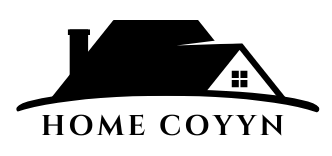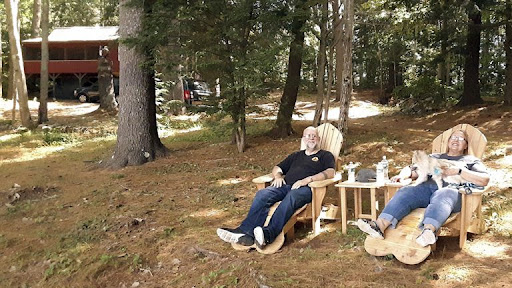The show Maine Cabin Masters has garnered significant attention for its unique approach to restoring and rejuvenating cabins in the heart of Maine’s wilderness. Hosted by builder Chase Morrill and his talented team, the series showcases creativity, craftsmanship, and an appreciation for both traditional and contemporary design. While the show predominantly focuses on rustic, New England-style cabins, there has been a notable trend of integrating diverse design elements from around the world, including the rich and elegant influences of Italy. Italian design, known for its sophisticated blend of elegance, craftsmanship, and history, adds a fresh dimension to Maine’s cabin aesthetic, offering a harmonious fusion of rustic charm and European refinement.
The Charm of Maine Cabin Masters
Since its debut, Maine Cabin Masters has captivated audiences by showcasing not just home renovations but also the stories and history behind the rustic cabins of Maine. Often, these cabins are family heirlooms, passed down through generations and laden with sentimental value. The team’s task goes beyond structural repairs; they are charged with preserving the heart and soul of each cabin, while modernizing and customizing them to suit the needs of today’s families.
Maine, known for its rugged coastline, dense forests, and tranquil lakes, is the ideal backdrop for such projects. Cabins in the area are typically built to blend with the natural environment, with an emphasis on wood, stone, and simple, practical designs. However, with more homeowners seeking personalization in their retreats, the Maine Cabin Masters team has increasingly incorporated international styles, including Italian influences, into their work. The Italian design’s emphasis on quality materials, elegant details, and functional beauty aligns well with the timeless appeal of Maine’s natural surroundings.
Italian Design: A Rich Tradition
Italian design is one of the most revered in the world, encompassing architecture, interior design, and furniture that spans centuries of tradition. From the intricate stonework of ancient Roman structures to the opulence of Renaissance palaces, Italian style is deeply rooted in history but is also constantly evolving. It represents a balance between form and function, often featuring clean lines, elegant finishes, and an enduring sense of beauty. Italian craftsmanship, particularly in materials like marble, wood, and wrought iron, is celebrate for its precision and artistry.
Incorporating Italian style into cabin design might seem like a stretch at first, given the stark differences between a Maine wilderness cabin and a Tuscan villa. However, the guiding principles of Italian design—simplicity, harmony with the surroundings, and the use of natural materials—dovetail beautifully with the essence of cabin living. The fusion of these styles can result in a space that feels both luxurious and cozy, making it a perfect getaway retreat.
The Maine Cabin Masters Approach: Italian Style Meets Maine
The team at Maine Cabin Masters has become increasingly experimental with their designs, blending traditional New England cabin aesthetics with Italian touches. Whether through the use of Mediterranean-inspired color palettes, elegant stone countertops, or intricate tile work, the results have been stunning.
1. Architectural Influence
Italian architecture is known for its graceful arches, symmetry, and balance between indoor and outdoor spaces. While a Maine cabin might not replicate the grandeur of a Roman villa, certain elements, such as arched doorways, can be introduce subtly to elevate the design. On Maine Cabin Masters, the team often enhances entryways or windows with arched designs, offering a nod to Italian aesthetics while still maintaining the cabin’s rustic charm.
Additionally, Italian homes are built with an eye toward blending interior spaces with nature. Maine Cabin Masters often incorporates large windows and open layouts that draw the beauty of Maine’s landscapes into the cabin, much like Italian villas that emphasize views of gardens or countryside. By creating a seamless connection between the inside of the cabin and the natural surroundings, they mimic one of Italy’s greatest architectural gifts: the fusion of indoor and outdoor spaces.
2. Materials and Craftsmanship
One of the most significant contributions of Italian design to Maine cabins is the use of high-quality, natural materials. Italian homes traditionally feature stone floors, expose wooden beams, and wrought iron accents, all of which can be incorporate into a cabin setting. The Maine Cabin Masters team frequently uses locally sourced materials, but they have also started to incorporate Italian-inspired materials such as terracotta tiles, marble countertops, and ornate iron fixtures.
For example, a cabin that was initially clad in simple pine can be given a luxurious makeover by incorporating Italian marble in the kitchen or bathroom. The team might use terracotta tiles in the entryway, offering a subtle Mediterranean vibe without overpowering the cabin’s rustic character. Additionally, expose wooden beams, a staple in both Italian and Maine architecture, can be restore and highlighted, combining the craftsmanship of two regions known for their love of woodwork.
3. Italian-Inspired Decor and Furnishings
Decorative elements are another area where the Italian style shines. Maine Cabin Masters often incorporate handcrafted Italian furniture or decorative items that bring a sense of warmth and sophistication to the cabins. In many Italian homes, furniture is designe to be both beautiful and functional, with an emphasis on durability and timeless style. In the cabins, the addition of hand-carved wooden furniture, wrought iron light fixtures, and ceramic vases or dishes can evoke the feeling of a Tuscan retreat.
The choice of fabrics also plays a critical role. Italian design frequently features rich textures and luxurious textiles like velvet, linen, and leather. Maine Cabin Masters might introduce leather sofas or handwoven throws, blending comfort with a sense of refinement. These elements bring a touch of luxury to the cabin while ensuring that the space remains cozy and inviting—a key feature of any cabin in Maine.
4. Color Palettes Inspired by the Mediterranean
Color is another aspect where Italian design influences Maine cabins. The Mediterranean palette, with its rich terracotta hues, olive greens, soft yellows, and deep blues, can be easily integrate into a cabin’s interior. The natural tones mirror the surrounding landscape, whether it’s the deep greens of Maine’s forests or the earthy browns of the wood and stone used in the cabins. These warm, muted colors create a relaxed and inviting atmosphere, perfect for a retreat.
The Maine Cabin Masters team often employs these colors in their renovations, using them in everything from wall paint to decorative tiles. A splash of Mediterranean blue in a kitchen backsplash or soft olive green cabinets can offer a subtle but distinct nod to Italian style, without overshadowing the rustic, woodsy feel of the cabin.
Conclusion: A Perfect Blend of Traditions
The Maine Cabin Masters have proven time and again that their creativity knows no bounds, and their ability to seamlessly blend styles is a testament to their craftsmanship. By incorporating Italian design elements into Maine cabins, they offer a fresh take on cabin living that combines the rustic beauty of New England with the elegance and sophistication of Italy. This fusion creates spaces that are not only visually stunning but also functional, comfortable, and deeply connected to both the natural world and human tradition.
Through the use of high-quality materials, thoughtful design, and a careful balance of modern and traditional elements, the Maine Cabin Masters continue to elevate cabin restoration to an art form. The marriage of Italian style with Maine’s rugged landscape results in cabins that are more than just retreats—they are living works of art, blending the best of both worlds.

